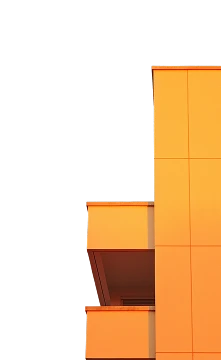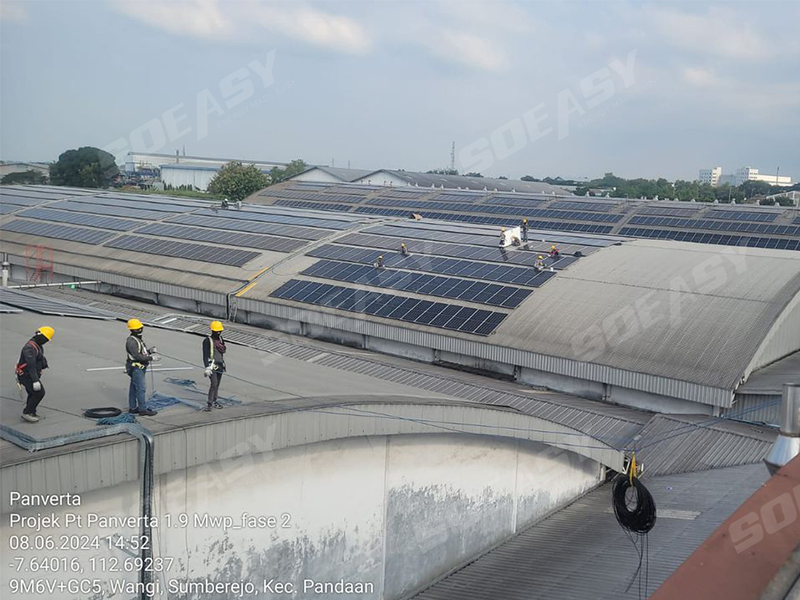
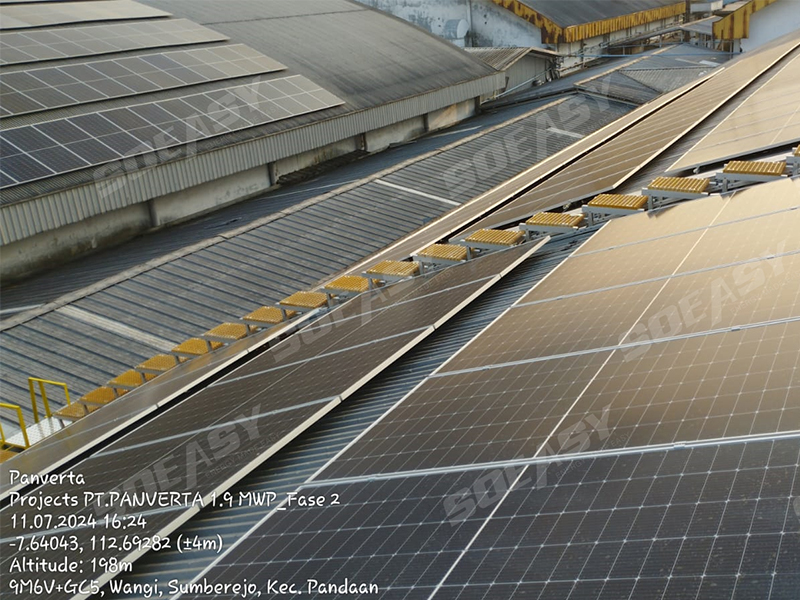
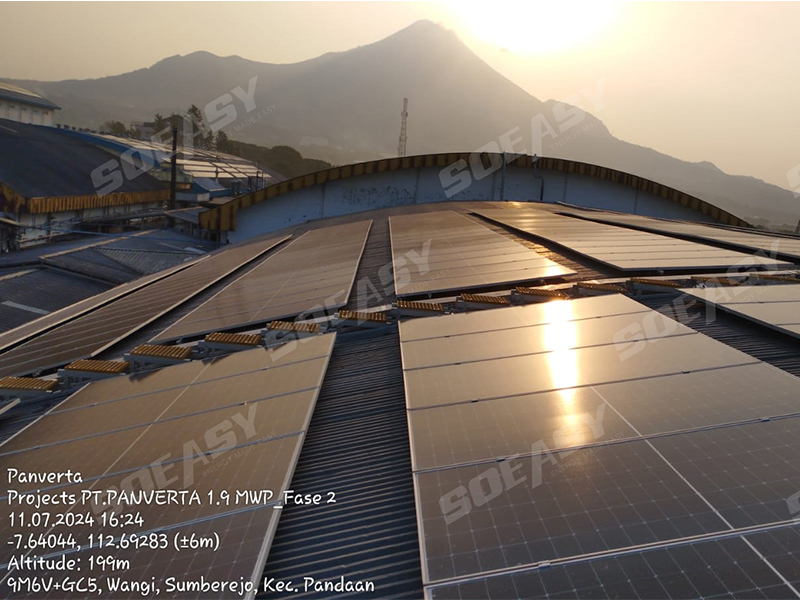
2MW圆弧屋顶太阳能支架项目
近日,我司顺利完成了位于印度尼西亚的2MW圆弧屋顶太阳能支架及步道板安装项目。从初期设计到最终实施安装的每一个环节,都凝聚了我司工程师的专业知识与施工团队的精湛技艺。通过采用定制化设计与高品质材料,我们确保了支架结构的适应性与可靠性,同时在整体方案中融入了视觉美感,使系统与当地建筑风格及自然环境和谐融合。
本项目不仅体现了我们对环境保护和可持续能源发展的坚定承诺,也展示了我司在高效太阳能解决方案的设计、制造及安装方面的领先实力。以下内容将分享在圆弧屋顶支架设计与安装过程中所面临的一些挑战,供业内参考。
圆弧屋顶太阳能支架的设计难点
1. 支架与屋面结构的适配性
圆弧屋顶的太阳能支架设计需与屋顶的曲面结构高度匹配,这与其他类型屋顶可采用统一连接方式的支架不同。由于弧形曲面的存在,设计上对结构稳定性提出了更高要求,通常需采用特殊材料或结构形式加以强化;相比之下,普通平屋顶支架的稳定性更易实现。
此外,圆弧屋顶太阳能支架的设计不仅要满足功能性,还需兼顾整体视觉的协调性,使支架与屋面曲线自然融合,这在设计层面上也提出了更高的挑战。而其他类型屋顶支架往往不需要过多考虑与建筑风格的融合,但在曲面屋顶项目中,保持建筑美感则显得尤为重要。
在实际设计过程中,由于屋顶坡度多变且不规则,支架设计需将屋面划分为多个倾斜区段分别建模设计。步道板的连接部位也进行了多轮模拟优化,确保整体结构协调统一。
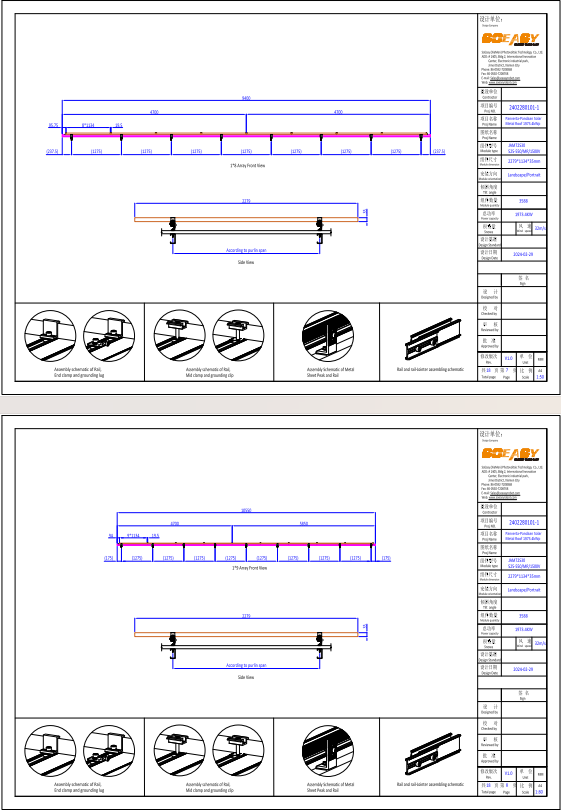
2. 屋顶支架的材料选择
考虑到圆弧屋顶通常具有较大的无遮挡面积,其上安装的太阳能支架需选用更具耐腐蚀性和耐候性的材料,以确保结构长期稳定。因此,圆弧屋顶支架所用材料必须具备良好的可塑性和适应性,才能在不同曲率的屋面上实现稳固安装。同时,材料的表面处理(如阳极氧化、热镀锌等)需与屋顶材料的化学性质相容,以防止因材料不兼容而引起的腐蚀问题。
3. 支架项目的成本考量
我们深知,定制化的支架系统和复杂的安装过程可能导致初期投资成本较高。然而,在设计与预算阶段,我们始终以客户利益为优先,综合考虑支架的材料成本、生产成本及安装成本,力求在短期投入与长期效益之间找到最佳平衡点,确保客户既能获得高质量的太阳能支架系统,又能实现可观的经济回报。
4. 支架材料的热胀冷缩问题
考虑到季节温差对屋面与支架材料热胀冷缩的影响,设计中需预留合理的伸缩缝或采用可伸缩连接件。支架与太阳能组件之间的连接方式也必须能在温度变化下保持稳定,以防因热胀冷缩造成的结构损坏。
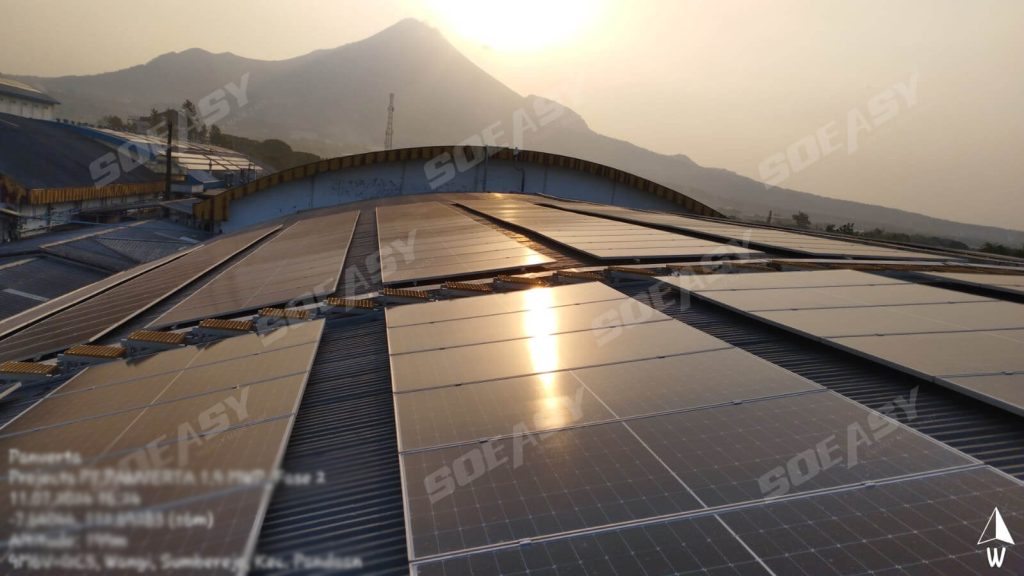
圆弧屋顶太阳能支架施工难点
1. 安装团队的专业要求
在曲面屋顶上安装太阳能支架比传统屋顶更加复杂,需精准测量并采用特殊安装工艺以适应屋顶的曲率。安装团队的技能要求较高,必须具备专业知识和丰富经验才能确保正确安装,而其他类型支架系统的安装相对较为简单。施工过程中可能需要使用专用工具或方法,例如采用柔性材料或可调节夹具以贴合屋顶形状。
2. 锚点选择
在圆弧屋顶上选择合适的锚点较为困难,需要找到既能承载太阳能组件重量又不会损伤屋顶结构的位置。锚点必须依据屋顶结构强度和承载能力谨慎挑选,以避免安装后出现下沉或破损等问题。
3. 防水及密封处理
施工时必须确保不破坏屋顶的防水层,这对施工技术和材料选择提出了更高要求。锚点周围区域必须做好严密密封,防止雨水渗透和由此引发的水害风险。
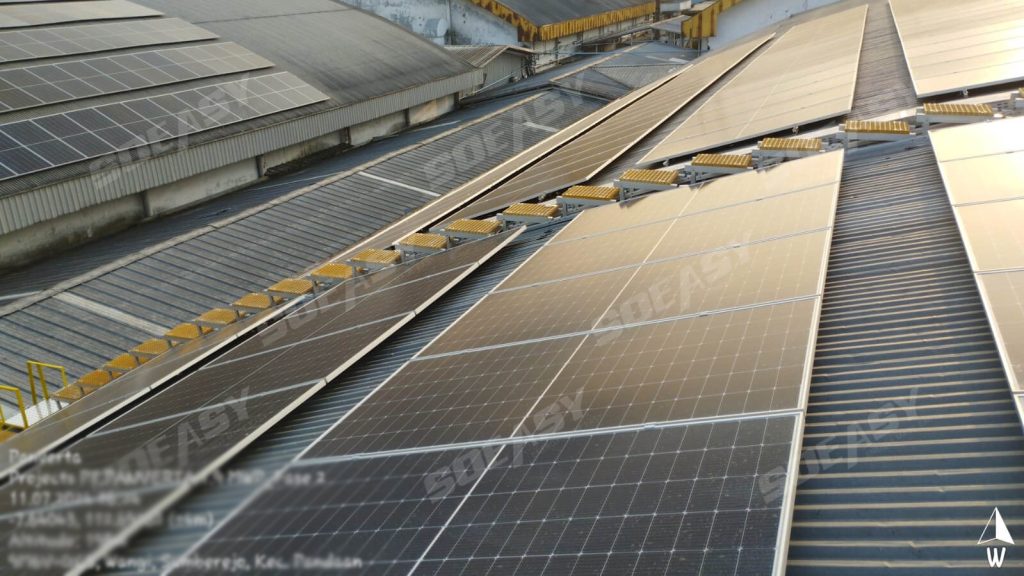
携手共筑绿色能源未来
作为专注于太阳能支架产品的领先企业,我们深知每一次创新和服务都会对客户、环境及绿色能源的未来产生深远影响。因此,我们致力于提供高效、适应性强且美观的太阳能支架系统,确保客户最大化利用可再生能源的同时,保护并提升资产价值。
SOEASY 坚信,通过不断追求创新与卓越,能够推动太阳能行业的持续发展,为全球提供更多清洁、可再生的能源解决方案。我们期待与志同道合的合作伙伴携手,共同复制更多成功案例,见证并促进绿色能源的蓬勃发展。
 English
English 

